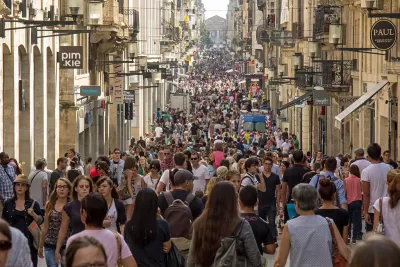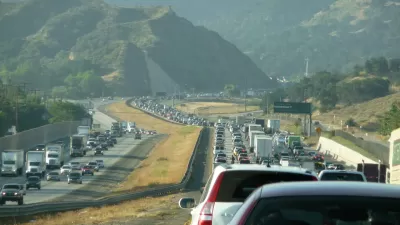The sprawling mass of suburbia has been a disaster for the environment. But now smaller, denser cities herald a renaissance in city living.

“Between the 1970s and early 21st century, most cities went through a period of what urban planners call de-densification. Think of it as middle-aged spread: As societies became more affluent and car-based, low-density housing developments on the outskirts of cities provided larger homes for people who wanted more space but to still be within driving distance of jobs and shops. The growth of suburbia was the predominant trend for most cities all over the world in the second half of the 20th century, says Chiara Cortinovis, an urban planning researcher at Humboldt University of Berlin,” writes Matt Reynolds for Wired.
“When Cortinovis charted the density trends of 331 European cities between 2006 and 2018, that’s exactly the pattern she observed for the first half of that time period. Sixty percent of the cities she studied got less dense between 2006 and 2012. But in the following six years this dynamic suddenly flipped. Between 2012 and 2018, only a third of the cities in the sample were constantly de-densifying, and almost all of those cities were either in eastern Europe or Iberia where city populations are mostly shrinking while suburbia keeps expanding. Instead the picture across the majority of central, northern, and western Europe showed that cities were getting denser. Populations were growing, but most of these people weren’t moving into suburban homes with garden plots and double garages. They were moving into the inner city.”
FULL STORY: Europe’s Cities Are Getting More Crowded—That’s a Good Thing

Planetizen Federal Action Tracker
A weekly monitor of how Trump’s orders and actions are impacting planners and planning in America.

Restaurant Patios Were a Pandemic Win — Why Were They so Hard to Keep?
Social distancing requirements and changes in travel patterns prompted cities to pilot new uses for street and sidewalk space. Then it got complicated.

Map: Where Senate Republicans Want to Sell Your Public Lands
For public land advocates, the Senate Republicans’ proposal to sell millions of acres of public land in the West is “the biggest fight of their careers.”

Maui's Vacation Rental Debate Turns Ugly
Verbal attacks, misinformation campaigns and fistfights plague a high-stakes debate to convert thousands of vacation rentals into long-term housing.

San Francisco Suspends Traffic Calming Amidst Record Deaths
Citing “a challenging fiscal landscape,” the city will cease the program on the heels of 42 traffic deaths, including 24 pedestrians.

California Homeless Arrests, Citations Spike After Ruling
An investigation reveals that anti-homeless actions increased up to 500% after Grants Pass v. Johnson — even in cities claiming no policy change.
Urban Design for Planners 1: Software Tools
This six-course series explores essential urban design concepts using open source software and equips planners with the tools they need to participate fully in the urban design process.
Planning for Universal Design
Learn the tools for implementing Universal Design in planning regulations.
Heyer Gruel & Associates PA
JM Goldson LLC
Custer County Colorado
City of Camden Redevelopment Agency
City of Astoria
Transportation Research & Education Center (TREC) at Portland State University
Camden Redevelopment Agency
City of Claremont
Municipality of Princeton (NJ)





























